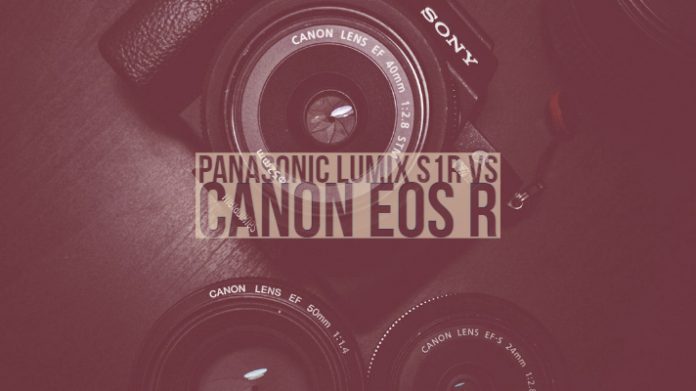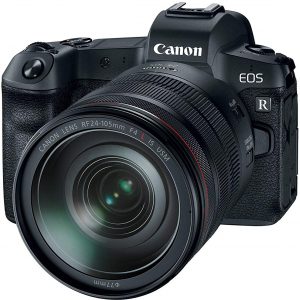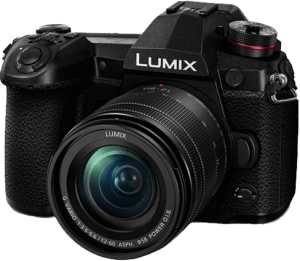Full frame mirrorless cameras have been one of the most prominent genres when it comes to the quality services in the realm of photography and allied services. Panasonic and Canon, two of the most popular camera manufacturers have come up with their specialized offerings – the Panasonic Lumix S1R vs Canon EOS R.
How do they compare against one another? We will check out for a clear understanding of the two competing devices.
Panasonic Lumix S1R vs Canon EOS R – How do they compare?
Well, both Panasonic and Canon are the two capable manufacturers when it comes to outstanding cameras. Canon recently jumped into the bandwagon of full-frame mirrorless cameras with the Canon EOS R. Not to be left behind, Panasonic has decided to move ahead with the genre and has come up with the Lumix S1R. Before we can continue discussing the two competing cameras, it should be noted that the Panasonic S1R is yet to be made available. With the launch expected in March 2019, we would expect you to take the specifications and features here with a pinch of salt.
Let us compare the two cameras based on a few key features –
| Features/Particulars |
|
|
| Optical Zoom | EF Lens Dependent | L mount – Lens Dependent |
| Megapixels | 31.7 | 47 |
| ISO Sensitivity | Auto 100-40000 (in 1/3-stop or whole stop increments) ** Note: Can be expanded to L:50, H1: 51200, H2: 102400 | ? |
| Pixel Size | 5.4µm | ? |
| Image Processor | DIGIC 8 | Venus processor engine |
| Autofocus | Dual Pixel CMOS AF | Contrast-detect AF with DFD |
| Max aperture | f/8.6 | ? |
| Max Shutter speed | 30-1/8000 sec | ? |
| Built-in Flash | No | No |
| Presets for white balance | 5 | ? |
| Screen | 3.15″ – 2.10 Million Dots | ? |
| Screen articulation | Yes | No |
| Max video resolution | 4K @ 30 FPS | 4K @ 60 FPS |
| Storage type | SD, SDHC and SDXC | SD, SDHC and SDXC |
| HDMI connectivity | Yes | Yes |
| Wireless Connectivity | Yes- Bluetooth and WiFi | Yes – Bluetooth and WiFi |
| Battery Life | LP-E6N (Approx. 370 shots) | ? |
1. The Sensor
The Canon EOS R comes equipped with a 30 MP CMOS sensor. You have the new age DIGIC 8 image processor on the device. Canon claims that the new processor offers an extended performance regarding image performance. The Panasonic S1R, on the other hand, comes with a whopping 47 MP sensor. Equipped with the all-new Venus processor engine, we would expect an excellent video performance. The Panasonic camera is more focused on images. However, the video performance is not an issue though.
2. Autofocus
Panasonic has packed in a host of features and functionalities in the S1R but has not come up with many details. The camera makes use of contrast-detect AF with DFD technology. However, there is no on-sensor phase-detect pixels option available. Canon, like on most of its EOS R cameras, employs the Dual Pixel CMOS AF focusing system. However, you would find the focusing system quite improved when compared to the previous models. The camera comes with 5,655 points with 88% horizontal and 100% vertical coverage. There is information available as of now about the autofocus points on Panasonic Lumix S1R.
3. The Design
If you have used Canon’s range of cameras before, you will find Canon EOS R to pack in the features practically similar to the earlier devices. It is compact and sports a familiar design. Of course, the compact size would translate into the lesser room for the buttons. You have a touchscreen display and a tilting mechanism at that.
The Panasonic Lumix SR, on the other hand, offers you a better comfortable grip. In fact, in sharp contrast to the Canon EOS R, the Lumix S1R has enough room for the buttons and other controls. Panasonic claims that the camera is 100 percent sealed, but there is no mention of whether it has the waterproof properties being available. The Canon EOS R comes with weather and dust resistance properties.
4. Video Performance
Well, Panasonic has always been a more peerless performer when it comes to the videos. The Panasonic Lumix S1R would offer you 4K shooting performance at 60 fps. There is no information currently available on whether 10 bits recording and high frame rates will be made available. However, from what we would see from the history of the Panasonic cameras, we would expect the features to be made available.
Canon EOS R, on the other hand, comes with 4K recording capacity at 30 fps. The RW shooting mode will let you shoot at 8 fps.
5. The Mount
The Canon EOS R comes with the RF lens mount. The mount is characterized by the shorter flange distance and a shorter back focus distance. It also offers you adapters for EF and EF lenses as well; In fact, Canon has already launched three system adapters. We would consider it an intellectual endeavor on the part of Canon so that users who already have EF and EF-S lenses and want to opt for the EOS R camera can make use of their existing collection of lenses on the EOS R or any of the future cameras with the RF mount.
Panasonic, on the other hand, comes with the L mount. If you have been following the photography world intently, you would have been aware of the Panasonic, Leica and Sigma have come together to form the L Mount Alliance and possibly the Panasonic Lumix S1R is the first camera to feature the Leica registered design. The alliance claims that the L mount offers limitless compatibility with a wide range of existing lenses and help the photographers to mix and match any of the lenses manufactured by the three major manufacturers. There are currently 39 different lenses that use the L mount – either existing currently or planned for launch by 2019 and 2020.
The Parting Thoughts
Well, the Canon EOS R has already been launched and is widely available. However, the Panasonic Lumix S1R is still under development. It was announced at the run-up to the Photokina 2018. The camera is expected to be made available by March 2019. That would possibly explain the lack of information currently available on the features and functionalities of the new device from Panasonic.
As things stand now, Canon EOS R is a clear leader in the mirrorless full frame cameras. Until the time Panasonic launches its Lumix Sr, a lot of water would have been flown under the bridge. From that perspective, it may be too early to make any claim concerning how will the new full frame camera from Panasonic compete with the Canon EOS. As things stand as of now, we would consider Canon EOS R to be a clear winner.



